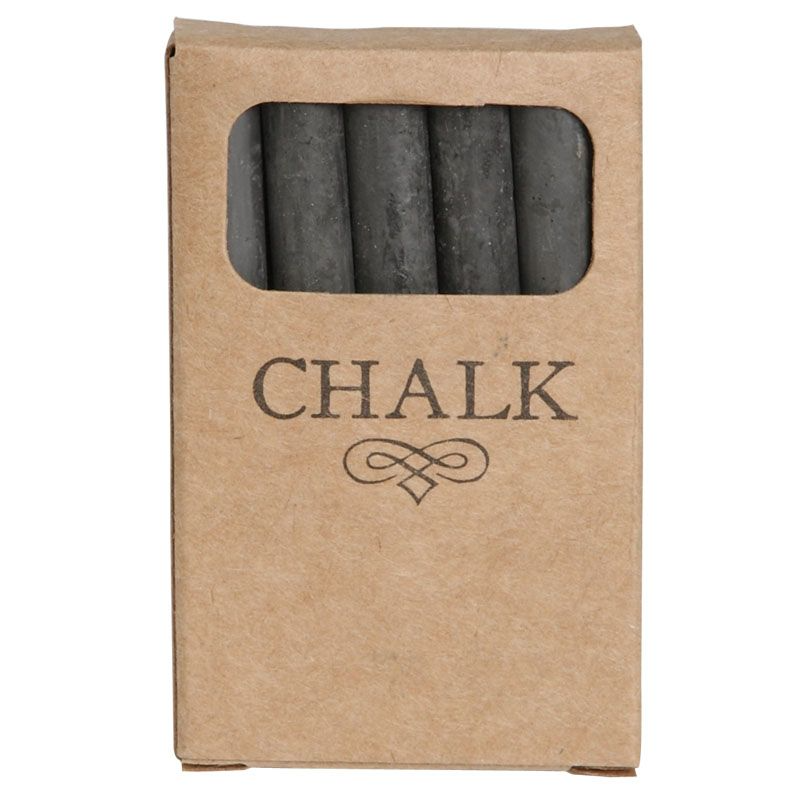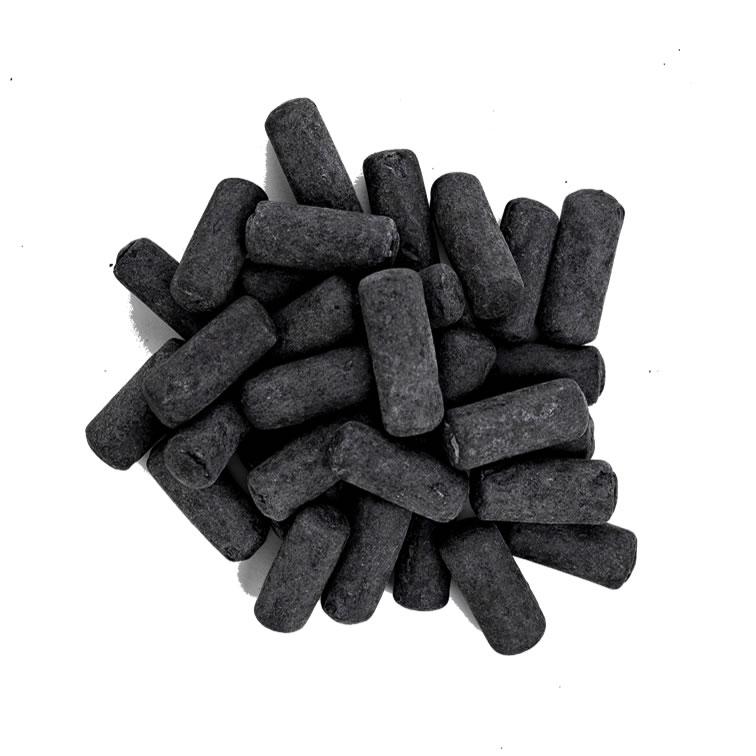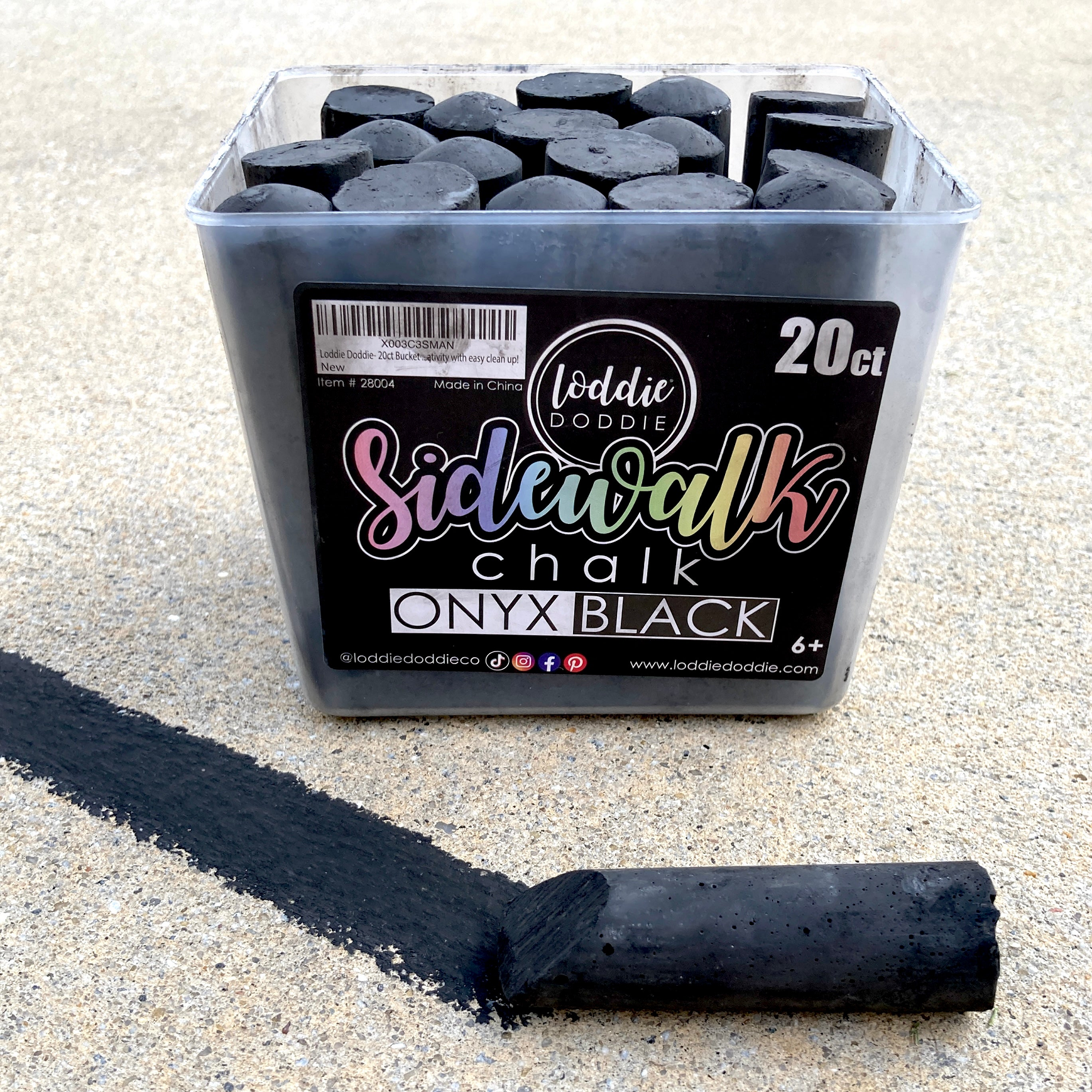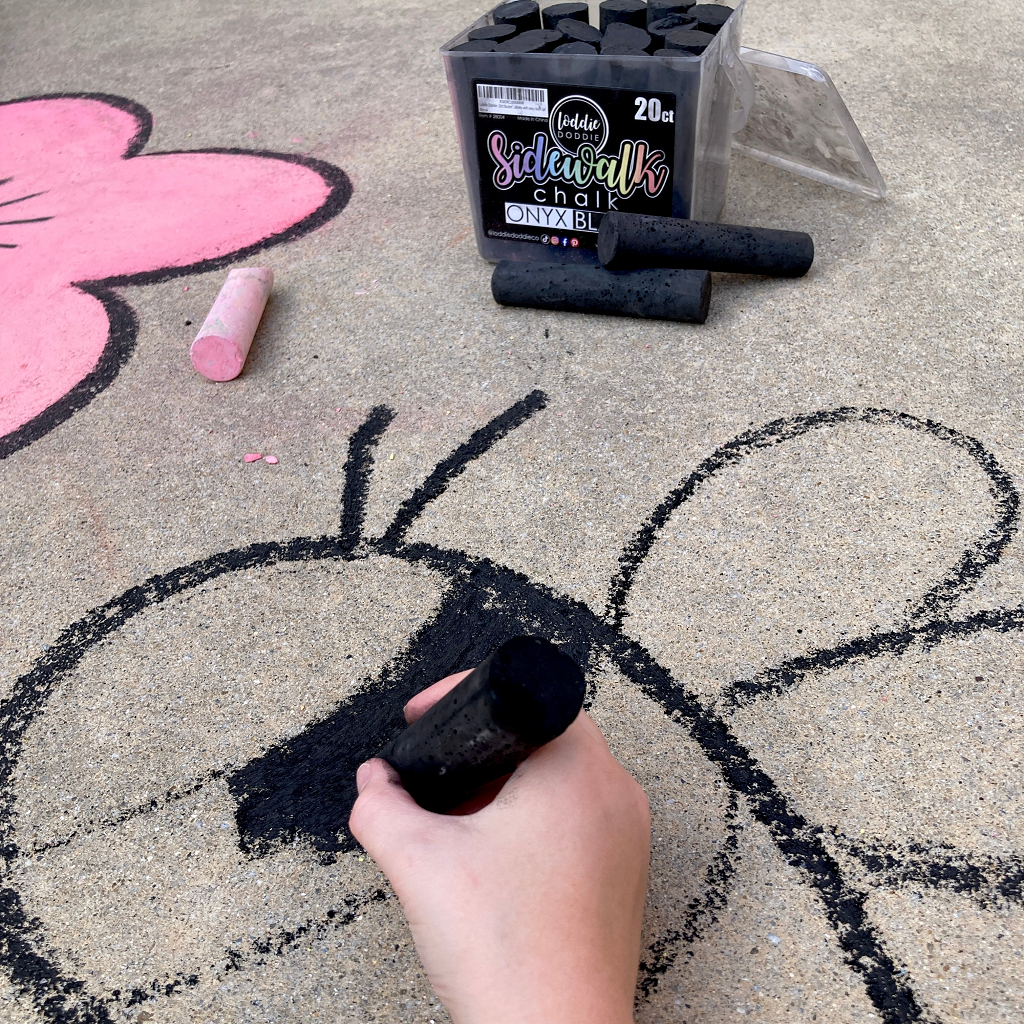Introduction to Black Chalk
Black chalk has a unique place in the world of art and education. Unlike white chalk, which is widely used for writing on blackboards and creating vibrant sketches, black chalk offers a different set of possibilities. Its rich, dark hue adds depth and nuance to drawings, and it is highly valued by artists for its versatility. This article explores the various aspects of black chalk, from its composition and properties to its diverse applications and how to use it effectively.
Composition and Properties of Black Chalk
Natural Composition
Black chalk is a naturally occurring material. It is primarily composed of carbon and clay, resulting in its rich, dark color. The carbon content comes from plant matter that has decomposed over thousands of years, forming a substance known as carbonaceous shale. When mixed with clay, this material takes on the chalk-like qualities that artists and educators find so useful.
Carbonaceous shale is non-toxic and safe for various applications, making black chalk an excellent choice for both professional and educational settings. The natural composition also adds to its longevity, as it can be stored for long periods without degrading.
Physical Characteristics
Black chalk is softer than many other drawing materials like graphite or charcoal. This softness allows for smooth, effortless application. The material’s malleability makes it ideal for shading and blending, enabling artists to create intricate gradations in tone.
One of the defining characteristics of black chalk is its ability to produce rich, deep blacks. This enables the creation of intense contrasts within a work of art, highlighting details and emphasizing elements. Additionally, black chalk tends to have a slightly shiny finish when applied heavily, adding another layer of visual interest.
Environmental Considerations
Black chalk is eco-friendly. It doesn’t produce harmful residues or let off toxic fumes. This quality makes it a responsible choice for artists and educators who are conscious about minimizing their environmental impact. The natural materials used in its production can be easily sourced and processed, reducing the carbon footprint associated with its manufacturing.
Recycling options are also available for black chalk. Broken or unused pieces can be ground down and reused, minimizing waste. This feature aligns with sustainability goals, making black chalk a preferable choice for eco-conscious users.
Artistic Applications of Black Chalk
Drawing and Sketching
Artists have long valued black chalk for drawing and sketching. Its rich pigmentation allows for the creation of detailed and expressive artworks. The ease with which it can be applied and blended makes it a favorite among portrait artists, as it can capture the subtleties of human features.
The versatility of black chalk extends to various drawing techniques. Artists can use it to create rough sketches or detailed, polished pieces. The material’s softness allows for smooth transitions between light and dark areas, making it ideal for creating depth and dimension. Techniques such as hatching and cross-hatching work particularly well with black chalk, adding texture and nuance to drawings.
Mixed Media Art
Black chalk excels in mixed media art. Its rich color complements other materials like pastels, charcoal, and ink. Artists can use black chalk to add shadows and details, enhancing the overall composition of a piece. This versatility makes it a valuable tool in any artist’s toolkit.
A common technique in mixed media art involves using black chalk to outline or define shapes before filling them in with other materials. This method allows the artist to establish a strong foundation for their work, ensuring that all elements are well-aligned and cohesive. Additionally, black chalk can be used to add final touches, such as shading and highlighting, to bring an artwork to life.
Temporary Art
Black chalk is also popular in temporary art forms such as chalk murals. Street artists use it to create dynamic and engaging pieces on sidewalks and walls. Its deep hue stands out against lighter backgrounds, creating a powerful visual impact.
The temporary nature of black chalk art makes it ideal for public installations and events. Artists can create stunning pieces that draw attention and engage audiences, knowing that the artwork can be easily removed or altered as needed. This flexibility allows for continual experimentation and innovation, pushing the boundaries of what is possible with temporary art.
Educational Uses of Black Chalk
Classroom Applications
While white chalk is the standard for writing on blackboards, black chalk finds its place in other educational settings. Teachers use it for specific subjects where dark, bold lines are needed, such as in drawing and design classes. The rich color of black chalk makes it highly visible, ensuring that students can easily see and understand the material being presented.
Black chalk is also used for creating visual aids and diagrams. Teachers can draw clear, detailed illustrations that enhance the learning experience. This is particularly useful in subjects that require a high degree of visual understanding, such as geometry, biology, and geography.
Engaging Students
Using black chalk can make classroom activities more engaging. Students can use it for hands-on projects and interactive lessons. The physicality of using chalk on a large surface encourages movement and participation, making learning more dynamic and enjoyable.
Black chalk also allows for creative expression in the classroom. Students can use it to create detailed drawings and designs, fostering their artistic skills and encouraging them to think creatively. This hands-on approach can improve retention and understanding, making lessons more effective and enjoyable.
Art Education
In art education, black chalk is a valuable tool for teaching various drawing techniques. Instructors can demonstrate shading, blending, and line work using black chalk, providing students with a solid foundation in these essential skills. The tactile nature of chalk drawing engages students, making the learning process more enjoyable and effective.
Black chalk is also used in art history lessons. Many famous artists, such as Michelangelo and Leonardo da Vinci, used black chalk in their sketches and preliminary drawings. Studying these works can provide students with insights into historical techniques and artistic processes, deepening their understanding and appreciation of art.
Industrial and Professional Applications
Construction and Carpentry
In construction and carpentry, black chalk is used for marking measurements and guidelines. Carpenters use black chalk lines to create clear, visible marks on wood, metal, and other materials. The bold, dark lines ensure precision and accuracy, which is crucial for successful construction projects.
The temporary nature of black chalk makes it ideal for planning and layout. Workers can easily erase and adjust marks as needed, ensuring that all measurements are accurate before making permanent cuts or installations. This flexibility saves time and reduces the risk of mistakes, improving overall efficiency and quality in construction projects.
Tailoring and Fashion Design
Tailors and fashion designers use black chalk to mark fabrics. These marks guide cutting, sewing, and fitting processes, ensuring precise and accurate results. The visibility of black chalk on lighter fabrics makes it an ideal tool for this purpose.
In fashion design, black chalk is used for sketching out patterns and designs directly on fabric. This allows designers to visualize their creations and make adjustments as needed. The temporary nature of chalk marks ensures that no permanent damage is done to the fabric, preserving its integrity and quality.
Metalworking and Welding
Metalworkers and welders use black chalk to outline cutting lines, welding points, and assembly instructions. The contrast of black chalk on lighter metals ensures that marks are easily visible, helping workers follow their guidelines precisely.
In welding, black chalk is going to use to mark points where welds need to be made. This ensures accurate and efficient work, improving the quality and strength of the welds. Additionally, black chalk can be going to use to mark areas for drilling or cutting, providing clear and precise guidelines for these processes.
How to Use Black Chalk Effectively
Preparing the Surface
Before using black chalk, it is essential to prepare the surface. Ensure that the surface is clean and free of dust, as this can affect the chalk’s adherence. For temporary art, using a smooth, non-porous surface will make it easier to erase the chalk later.
For permanent artworks, using a textured surface such as canvas or textured paper can enhance the chalk’s visual impact. The texture can add depth and interest to the drawing, making it more dynamic and engaging.
Techniques for Drawing and Shading
Using black chalk effectively requires understanding various drawing techniques. Applying light pressure will create thin, delicate lines, while applying more pressure will produce bold, dark lines. Experimenting with pressure will help you achieve the desired effect.
Shading with black chalk involves blending and layering. Start with light strokes and gradually build up to darker tones. Using your fingers or a blending tool, you can smooth out the transitions and create a seamless gradient. This technique is particularly useful for creating realistic shadows and highlights.
Erasing and Adjusting
One of the advantages of black chalk is its ease of erasing and adjusting. Use a soft eraser or a kneaded eraser to remove unwanted lines or lighten areas. This feature allows for continuous experimentation and adjustments, ensuring that your artwork remains flexible and adaptable.
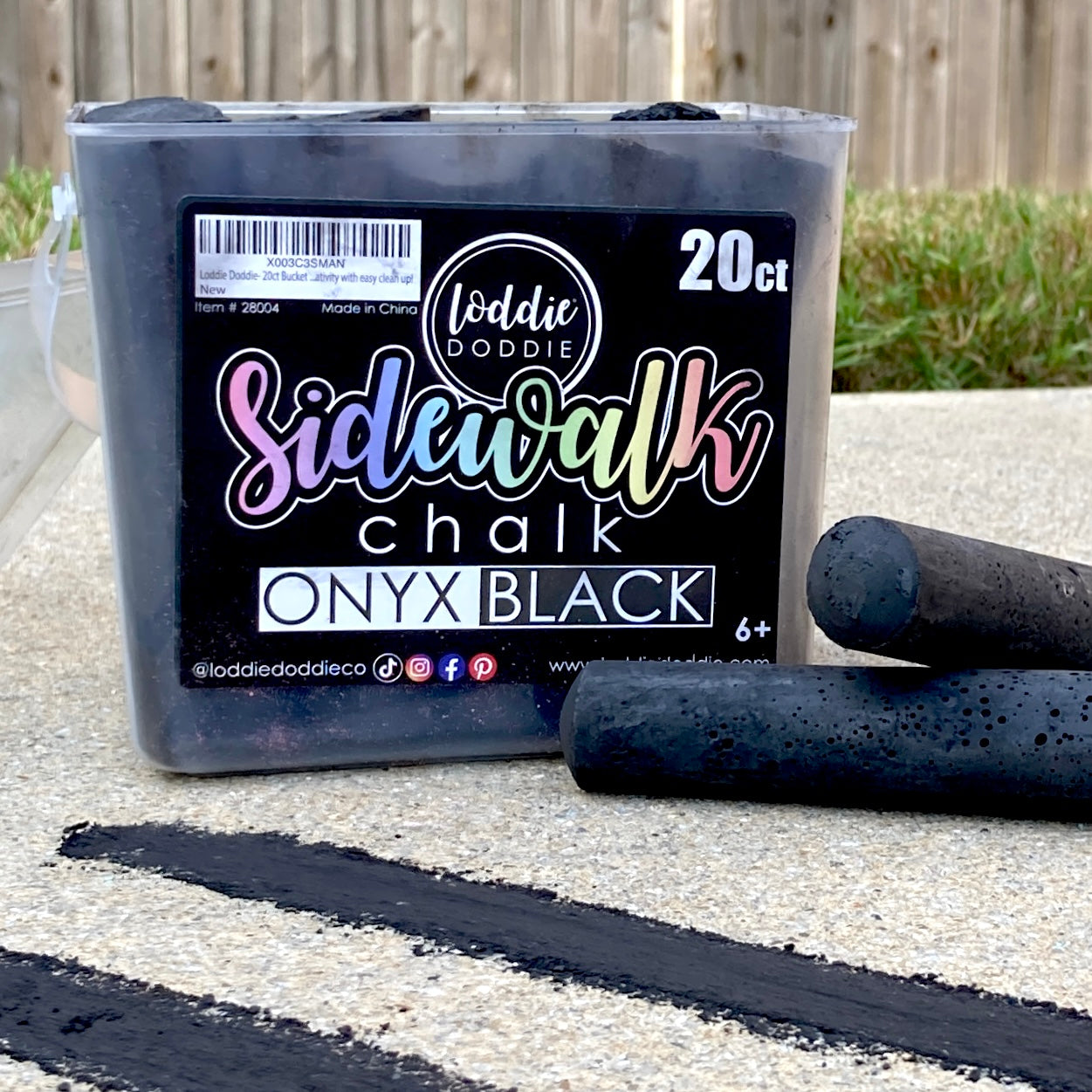
For large areas, a damp cloth or sponge can be going to use to wipe away the chalk. This is particularly useful for temporary art and installations, as it allows you to quickly and easily change or remove the artwork as needed.
Conclusion
The Unique Appeal of Black Chalk
Black chalk holds a special place in both art and education. Its rich, dark hue offers unique possibilities for creating depth and contrast in drawings and sketches. The versatility and ease of use make it indispensable for artists, educators, and industry professionals.
Whether for creating detailed artworks, marking precise measurements, or engaging students in interactive lessons, black chalk proves its worth time and again. Its eco-friendly composition and recyclability add to its appeal, making it a responsible choice for those who value sustainability.
In a world of ever-evolving tools and technologies, black chalk remains a timeless and valuable resource. Its unique properties and diverse applications ensure that it will continue to be a staple in various fields for years to come.
